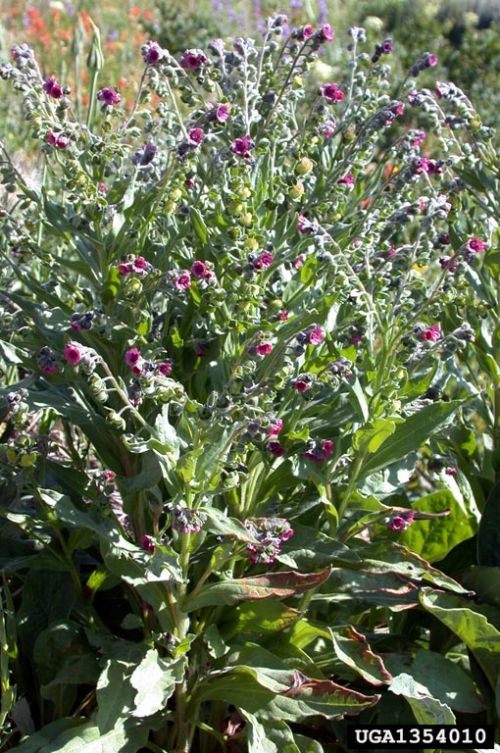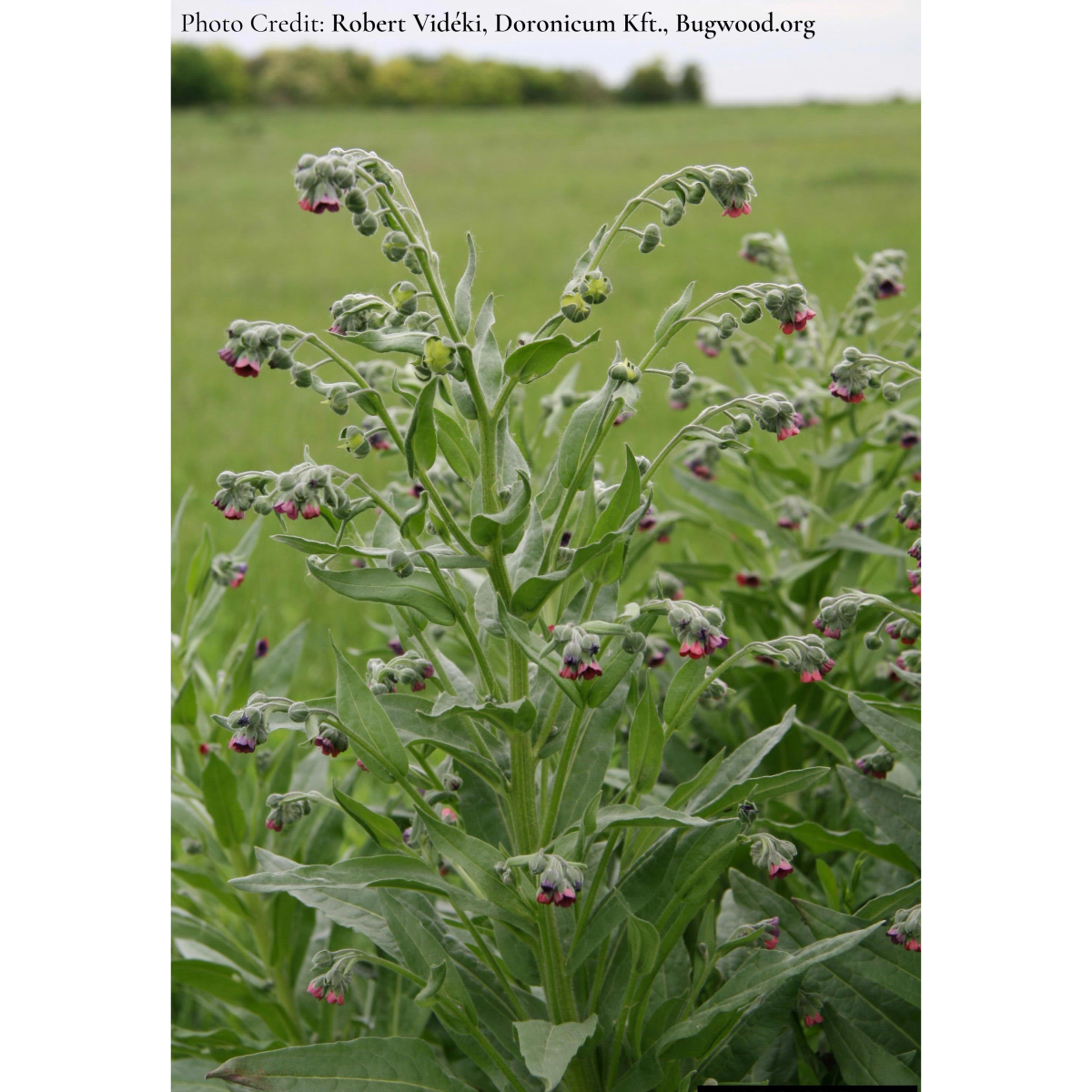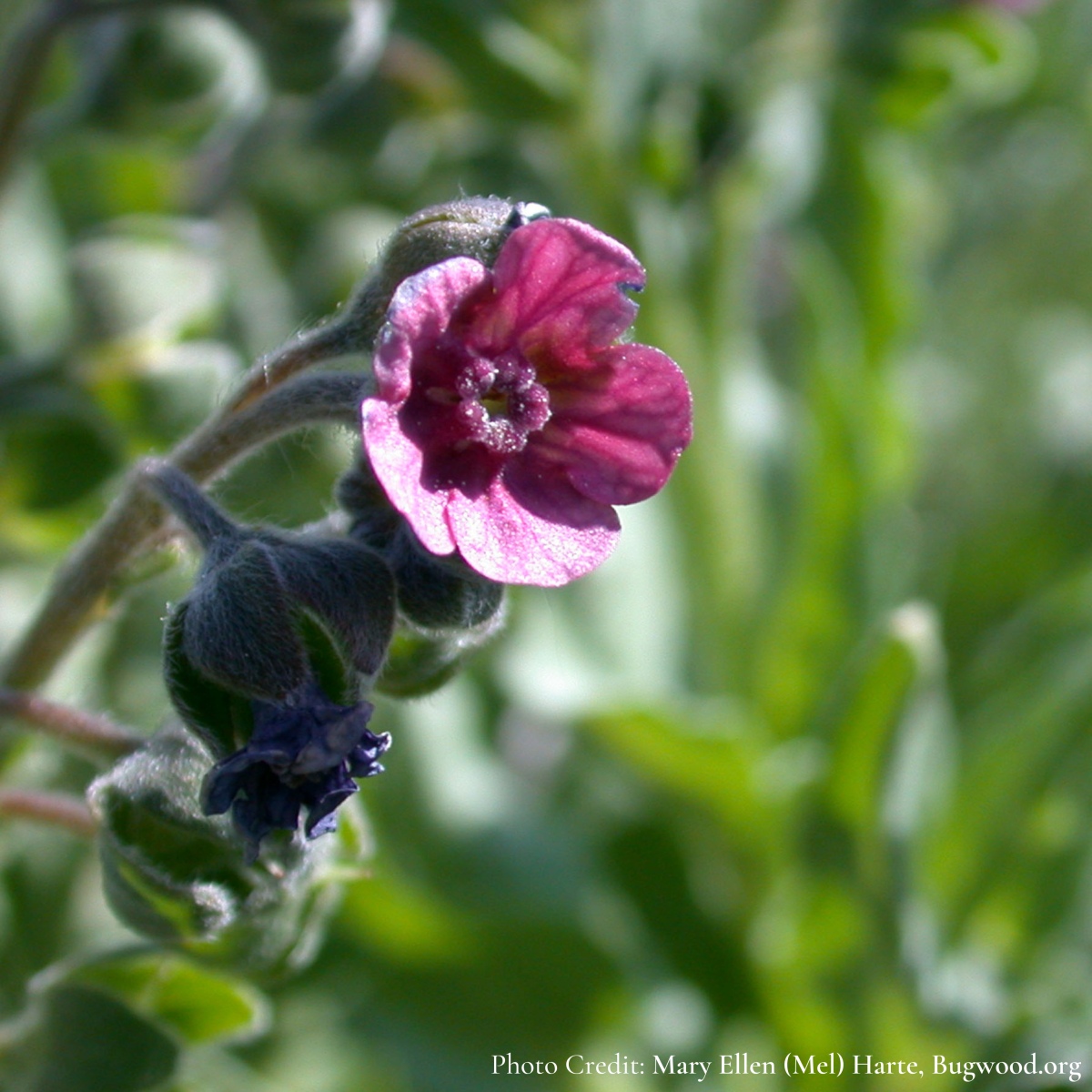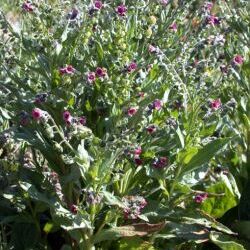
General: Plants with leaves in the shape of a dog’s tongue. Flowers turn to small burrs.
Height: Between 0.5-1.2m tall.
Flowers: Purple to reddish flowers with 5 petals.
Leaves/Stems: There can be a single or multiple stems on one plant. Leaves are lance-shaped and between 10 & 30cm long, 2-5cm wide. They are rough and hairy.
Root: Long taproot.
Dog burr, Gypsy Flower
Common Comfrey (Symphytum officinale)
Differences: Both are in the Borage Family so they do look very similar. Common Comfrey generally has wider leaves than Hound’s Tongue. After flowering common comfrey produces 4 nutlets that are smooth and shining whereas Hound’s tongue produces 4 nutlets covered with barbed prickles. The Hound’s Tongue nutlets readily stick to clothing, fur and gear like Velcro.
Where did it come from? Likely it was introduced as a contaminate from seed. Originally from Eurasia.
Where does it grow here? Grows in low to mid-elevation grasslands and forests, mainly associated with disturbed sites such as roadsides and clearcuts. It is adapted to alkaline soils.
Reproduction: By seed only. A mature plant can produce between 2000 & 4000 seeds each year. The seeds are viable in the soil for up to 1 year.
When does it grow, flower & seed? Sprouts March-April. Flowers May-July. Seeds August September. First year plants generally do not flower or seed. This occurs in year 2.
Spreads By: The seeds attach to clothing, livestock and wildlife. It can easily be spread across great distances. They are covered in hooked prickles that act like Velcro.
Plant Type: Biennial or short-lived perennial. It grows as a small plant (rosette) in the first year and then it bolts up in the second year and produces flowers and seeds.
- Poisonous to livestock particularly horses & cattle.
- Infestations in hay fields reduce available forage.
- Seeds stick to fur of livestock sometimes requiring veterinarian services for removal. This causes stress on the animal and possible reduced market value.
- The seeds can attach to shoelaces, clothing and gear of outdoor recreationists.
- Review your property regularly for this species.
- Treatment Remove small patches before it flowers & sets seed. Young plants can be hand-pulled. Repeated mowing before seed set can reduce infestation size. Biocontrol agents released in the 1990’s appear to have been successful in areas of BC and our region.
- Cover bare patches or disturbed soil by planting or seeding with non-invasives.
- Check areas where you have removed invasives for any new plants that year and in future growing seasons.
- Dispose of invasive plants responsibly. Bag them for disposal at the local landfill. Composting and burning are not recommended.
- Contact LRISS for specific treatment recommendations.
E-Flora BC: Electronic Atlas of the Flora of British Columbia.
Okanagan Invasive Species Online website.
Photo Gallery


